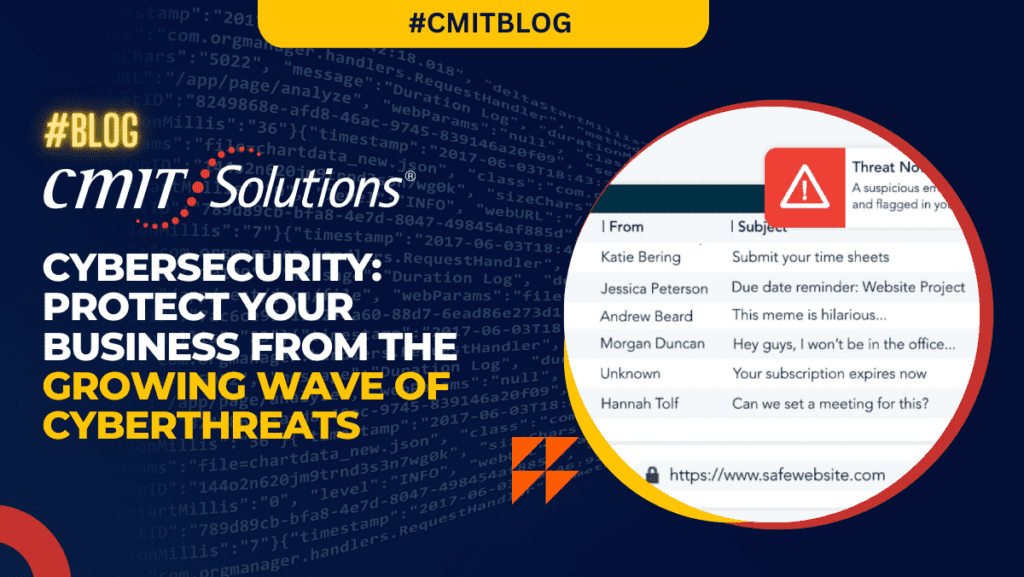For a firm growing in the busy New York market, where companies make unique ideas to sustain ahead of competition; quality IT infrastructure is crucial. The organizations of the IT systems should be strong for all businesses in Brooklyn- startups, midsize firms to big companies located in Manhattan. We delve into the critical factors one must bear in mind and account for when determining what is to be considered an ideal IT infrastructure to apply within your New York business organization.
Understanding New York’s Dynamic Business Environment:
The New York Business Industry has diversity and is very dynamic starting from the sector of finance, technology to even the fashion industry and hospitality. In such a dynamic environment, businesses meet distinctive challenges and opportunities that hence define their IT structure needs.
1. Scalability and Flexibility:
The most significant dimension of the concept is scaling over New York since quick growth and variable consumer needs are common for business running in this area. Any IT infrastructure that can scale up as workload increases or there is a surge due to seasonality then it has very high value. Flexibility is also vital as it enables organizations to change rapidly consisting of changing market situations and technological advancements.
2. Security and Compliance:
With the emerging cybersecurity threats changing each day, making a switch for New York companies to look at security issues more relationally will not only protect their data but make them in compliance with their compliances. For instance, in the finance and health industries they have to adhere to strict regulations that’s why strong security on their IT system is non-negotiable.
3. Connectivity and Reliability:
For a business entity that takes place in an environment where connectivity is the required tool, no other thing can be of much importance except for reliable networking infrastructure. Smooth integration ensures the provision of efficient and effective communication, coordination as well cloud service facilities which are key in modern business processes.
Essential Components of IT Infrastructure:
Selecting the best IT infrastructure requires assessing different elements, each being crucial in enabling business goals and improving efficiency.Here are key components to consider:Mute and silent people are the most benign types of communicators that everyone has encountered moments either in their lifetime or a period when they were active to have come across someone who does not utter any word but rather relies on gestures.
1. Hardware:
The hardware components should be chosen based on the factors of performance, reliability and scalability. Depending on your needs, both for the near and long term alike, between servers, storage systems or network hardware devices equipment should use solutions that are suitable to you.
2. Software:
The essence of IT architecture is in software and therefore the latter defines such important operations as productivity, collaboration or data processing. Choose software solutions that are scalable, easy to operate and dispose of existing systems. Integrate cloud-based software to ensure effectiveness, flexibility and accessibility.
3. Networking:
On the other hand sufficient networking infrastructure is required for seamless communication and data exchange within your organization, and outside it. Spend on VDSL internet connectivity, strong and stable virtual private networks as well
4. Security:
Implement safety measures that are reliable for instance; fire walls, encryption and multi-factor authentication among others. Also include regular vulnerability audits Reduce the risks of data frauds and cyber attacks by training employees about good practices in cyberspace.
5. Scalability:
The issue that needs to be accounted for is the scalability factor since there lies ‘come business expansion, especially during New York businesses. Choose an IT infrastructure that is scalable whenever the workload increases while growing and expanding without compromising on performance or security.
Evaluating Infrastructure Options:
There are different infrastructure choices that businesses in New York have, each with its intrinsic benefits and challenges.Here’s a comparative overview of on-premises, cloud, and hybrid solutions:The fact that the size of one personnel status has come forth as significantly larger than others implies a stagnant group membership capable of being ruptured.
1. On-Premises Solutions:
As regards on-premises infrastructure, the level of control and customizability is always at its full but it has significant one staple cost in buying hardware software maintenance. It is ideal for companies which follow very strict regulations on security and compliance, or when getting into the issues of data handling personal information.
2. Cloud Computing:
Cloud computing provides flexibility, scalability and efficiency to business because resources can be accessed online without having the need for a physical infrastructure. Major cloud service providers like AWS, Azure and Google Cloud offer different services that cater to specific business issues.
3. Hybrid Setups:
Hybrid infrastructure combines on-premise and cloud technologies for the benefits of both. It allows organizations to capture the benefits of cloud scalability and agility but also control over sensitive data as well as important applications networked on premises.
4. Disaster Recovery and Business Continuity:
In the case of New York because businesses are prone to natural disasters, infrastructure resilience is very necessary. Integrating robust development recovery and business continuity measures into your IT infrastructure strategy is crucial to reducing the risks associated with loss prevention as well as reduction in downtime when disruptions arise.
5. Disaster Recovery Planning:
Develop a solid disaster recovery plan that must outline data backup, replication as well as restoration activities. State the following points to ensure quick recovery and limited opportunities which could be backed up schedules, data retention policy and RTOs.
6. Business Continuity Measures:
Include business continuity plans that keep the operation going when disruptions strike. This may be achieved through redundancy systems, failover mechanisms and alternative work sites in an effort to protect core services after which customer disruption level would then be deemed as limited with that of the employees and stakeholders considered to have minimal effects.
7. Testing and Training:
Take the test and refine your disaster recovery plans, expose yourself to weaknesses of such procedures as well as improve response tactics. Implement drills and practice sessions whereby employees are familiar with evacuation plans, as well as timeframe adaptability in case of emergencies.
8. Cloud-Based Solutions:
Consider the utilization of cloud-based disaster recovery and business continuity solutions for their scalability, reliability, as well as geo redundancy. Data replication, failover automation and recovery orchestration among other services like the received by cloud providers allow organizations to keep operative continuity with minimal investments.
This will have as a consequence that New York’s businesses can enhance their resiliency capacities and reduce the amount of risks through disaster recovery or business continuity when integrated in your IT infrastructure strategy, while operations will continue farther on.
Real-World Examples and Case Studies:
Glucose can safely be given, as this surrounding temperature above normal body heat does not cause formation of bubbles which undergo collapse and transmit an embolism.
Many companies in New York have already implemented IT infrastructure solutions that meet the specific requirements and goals of each business.Let’s explore a few examples:However, even a trade deal with one of the member states would have little influence on India’s economy.
1. Financial Services Firm:
For this purpose, along with compliance demands, operational scalability and agility a major financial services firm in New York City decided on the hybrid IT infrastructure model. By relocating operations that did not require sensitive data-retention while maintaining the latter on premises, a firm stood to gain from lower operational costs and improved efficiency without compromising security.
2. E-commerce Startup:
Since its inception, an e-commerce startup based in Brooklyn that took cloud computing infrastructure initially utilized AWS services to create a working platform which also had scalability and resiliency. Enabled by on-demand scaling out of resources, and conversely away from proprietary technology, the startup’s growth was rapid in both terms of clientele as well as market share.
3. Healthcare Provider:
In the case of Queens, a healthcare provider was focused on security and compliance since they heavily invested in an EHR-strong infrastructure yet used cloud computing for remote consultations and telemedicine. The hybrid solution allowed the provider to deliver quality patient care in a manner that met both data privacy and regulatory requirements.
Conclusion:
The decision of choosing correct IT infrastructure arises as critical for companies functioning in New York’s bustling market. By developing knowledge about the issues, matters and opportunities that such a region presents to business; businesses enable making wise decisions which promote growth in addition to innovation as well as competition.
Regardless of choosing on-premises, cloud, or hybrid solutions, it is important to emphasize the need for scalability, security and flexibility as well as reliability. With use cases and case studies, businesses can learn valuable lessons regarding IT infrastructure design that will help them compete competently in the dynamic market of New York City.




